You’ve heard of audio books, but what about video books? The phrase doesn’t quite roll off the tongue. But in spite of that, many educators are looking for video versions of popular stories they can share to encourage students to engage with stories in a new way. In this blog entry, we’ll explore several sources of multimedia, digital tales for remote learners.
The Power of Digital Stories
Have you read Gene Zion’s story of Harry, the Dirty Dog? If not, Betty White’s reading of an old favorite of mine will get your tail wagging. That’s the power of digital stories, to bring to a child the power of another human’s voice and interest in a story. Take a moment to listen to Betty White read the story.

Listen online: https://www.storylineonline.net/books/harry-the-dirty-dog/
Let’s take a look at some sources of online stories you can share with your students.
Story Source #1: Storyline Online
This is a phenomenal resource of fifty-seven digital stories and all are completely free. The narrators are top notch, and each story comes with a teacher’s guide. For example, the guide for Harry, the Dirty Dog focuses on Grades K-2. Predictions, which is one of Reciprocal Teaching‘s Fab Four, are encouraged.
Storyline Online (@StorylineOnline) features apps for Android, iOS, and the Chrome browser. The stories and apps are free and will remain so.
Did You Know?
Sign up for one of our Google Certified Educator certifications. You’ll learn about more than Google Meet, as well as earn 12 CPE hours per course. Use these courses to get Google Educator certified. Find out more online.
Story Source #2: Audible Stories
We know listening to stories has the same benefit as reading with one’s eyes. Audible Stories is now offering, at no charge, a large collection of stories which are organized into a variety of categories, such as the following:
- Littlest Learners
- Elementary
- Tween
- Teen
- Literary Classics
- Folk and Fairy Tales for All
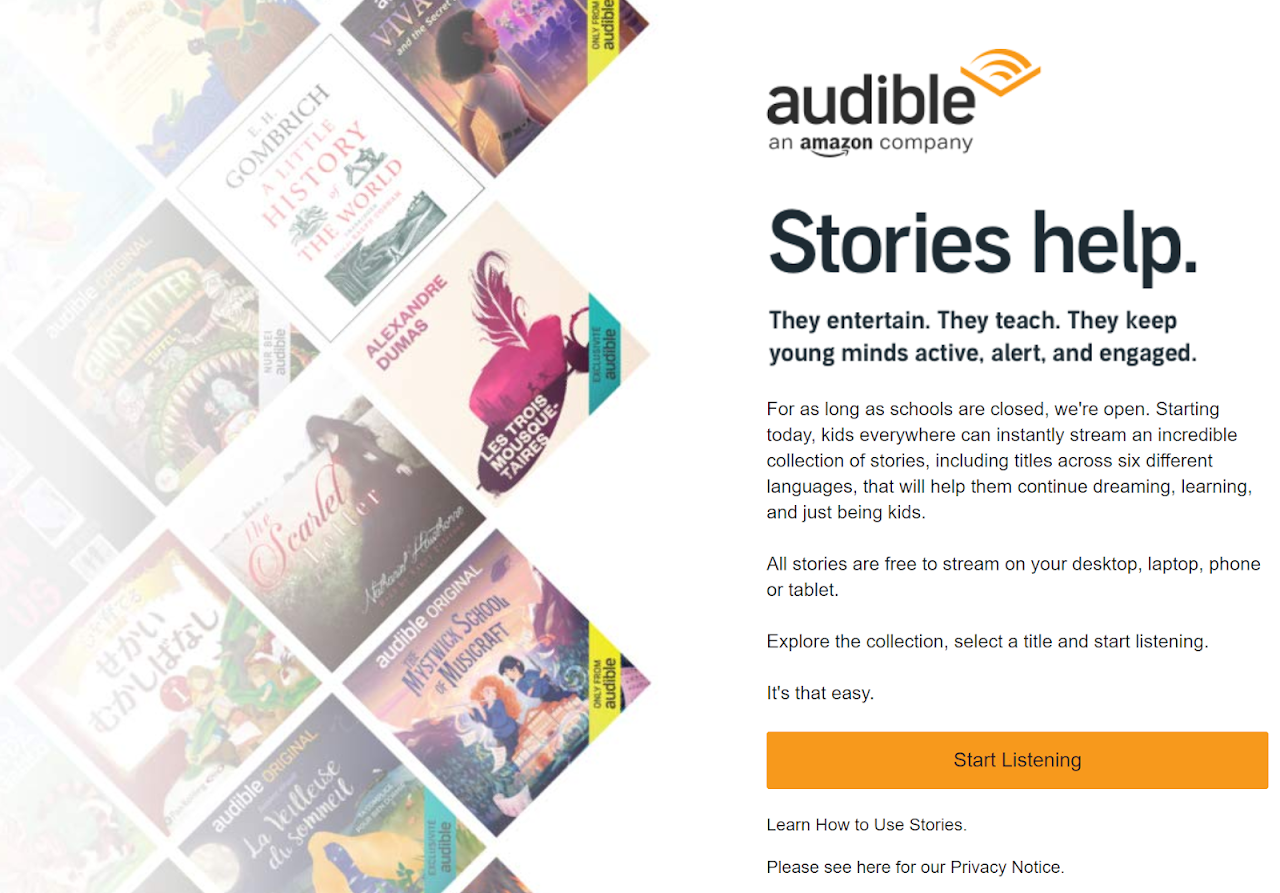
Their stories are also available in various languages including French, German, Spanish, Italian, and more. During COVID-19 crisis, Audible offers these at no cost.
Story Source #3: Storynory
Storynory has a variety of stories and tales in video format as well as in audio and text. They are also accessible via the iOS or Android app that you can get on your device. Students can read the story on the screen while listening to the audio recording, enhancing their reading and listening skills.
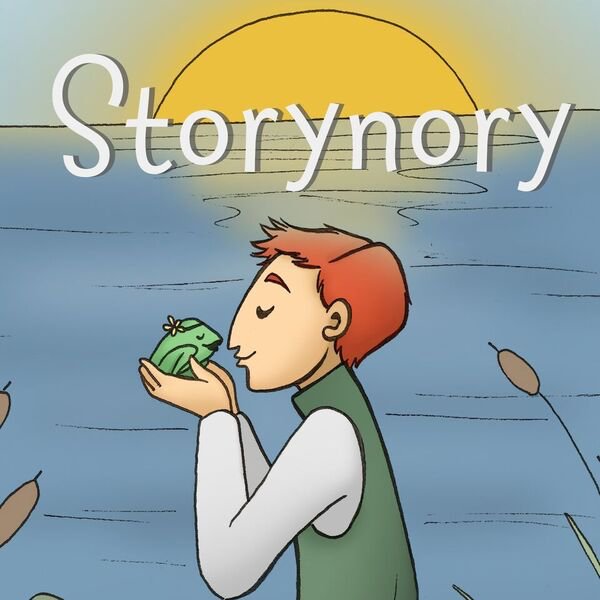 Storynory describes itself in this way:
Storynory describes itself in this way:
Storynory has been giving free audio stories to the world since November 2005. We are a podcast and a website with audio streaming. Some months we serve around a million downloads of our mp3 files (stored on Libsyn). All our content is free.
Another source of audio books is Loyal Books. They offer classic titles in audio format. You can often find the text version online since most are in the public domain.
Story Source #4: David Walliams
Author David Walliams is sharing stories through March and April, 2020, releasing an audio story every day.
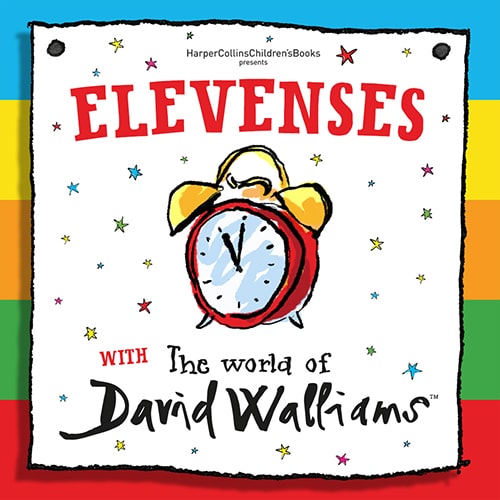
“All those stuck at home with their kids may be able to relate to ‘_The World’s Worst Children_’!” as David Walliams revealed that he’d be sharing his stories with the nation. (Source: Good Housekeeping)
You can get started with Grubby Gertrude. Try not to laugh too much at this delightful tale.
Story Source #5: EPIC!
Looking for a free source of books and audio books? Check out Epic! which offers free teacher accounts through June 30, 2020. It’s easy to get set up as a teacher and then add your students. Creating the students’ accounts is as easy as copying and pasting their names into a text box.
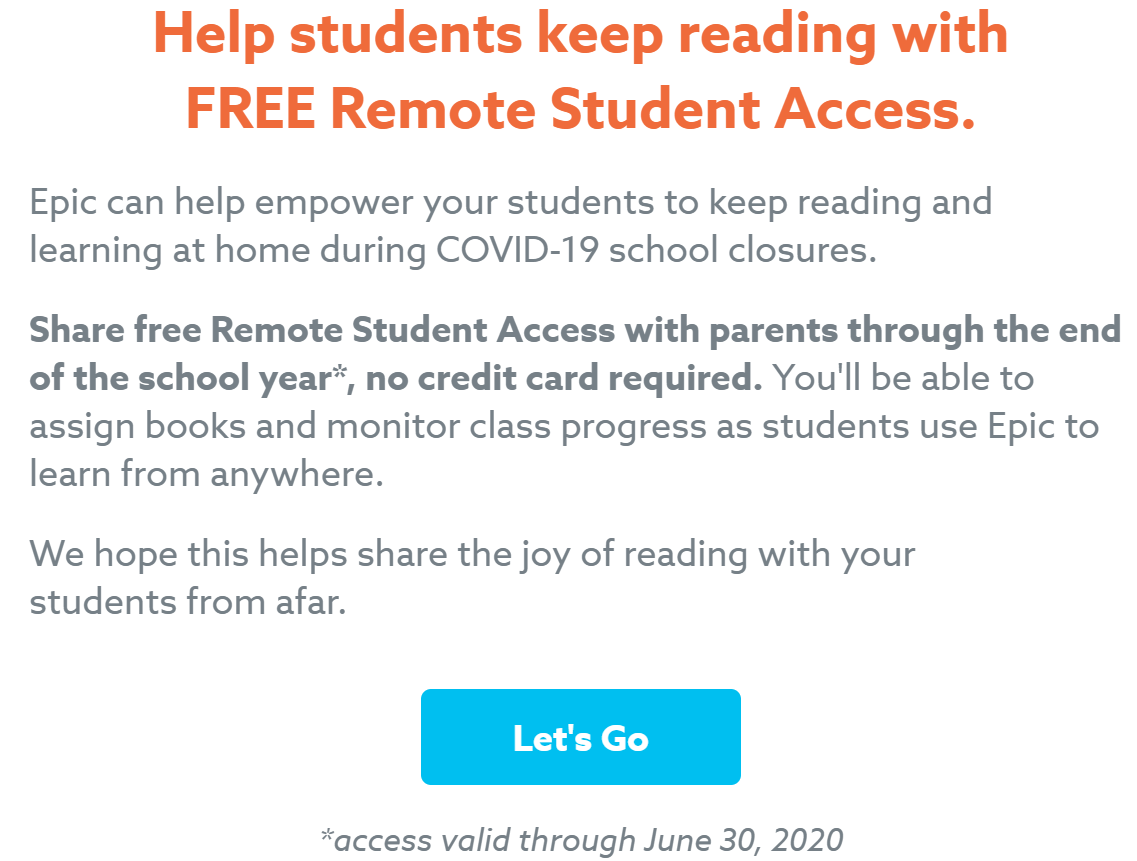
You can find quite a bit of content online, and your students will have easy access. Here’s some of the content, featuring audio and video books:
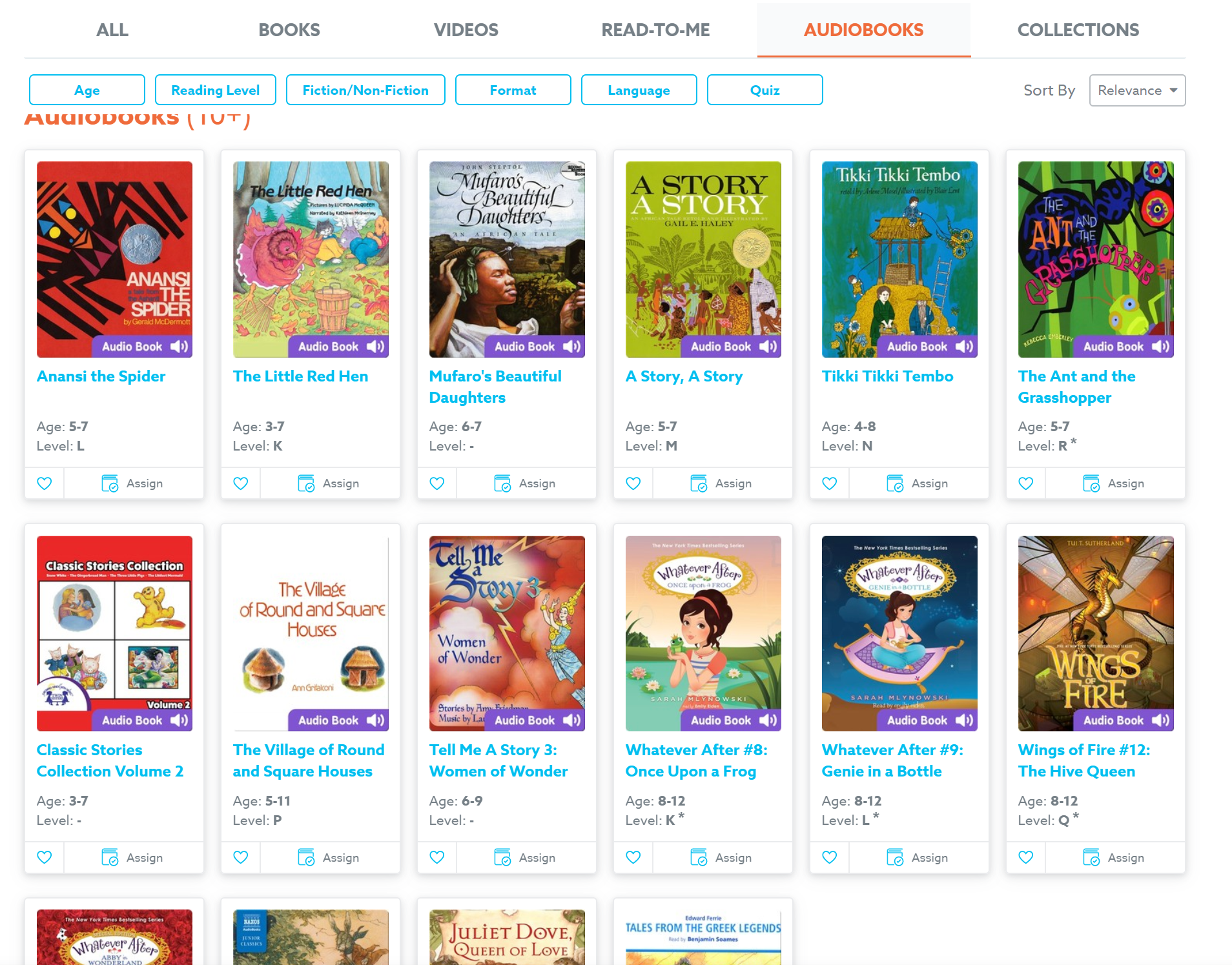
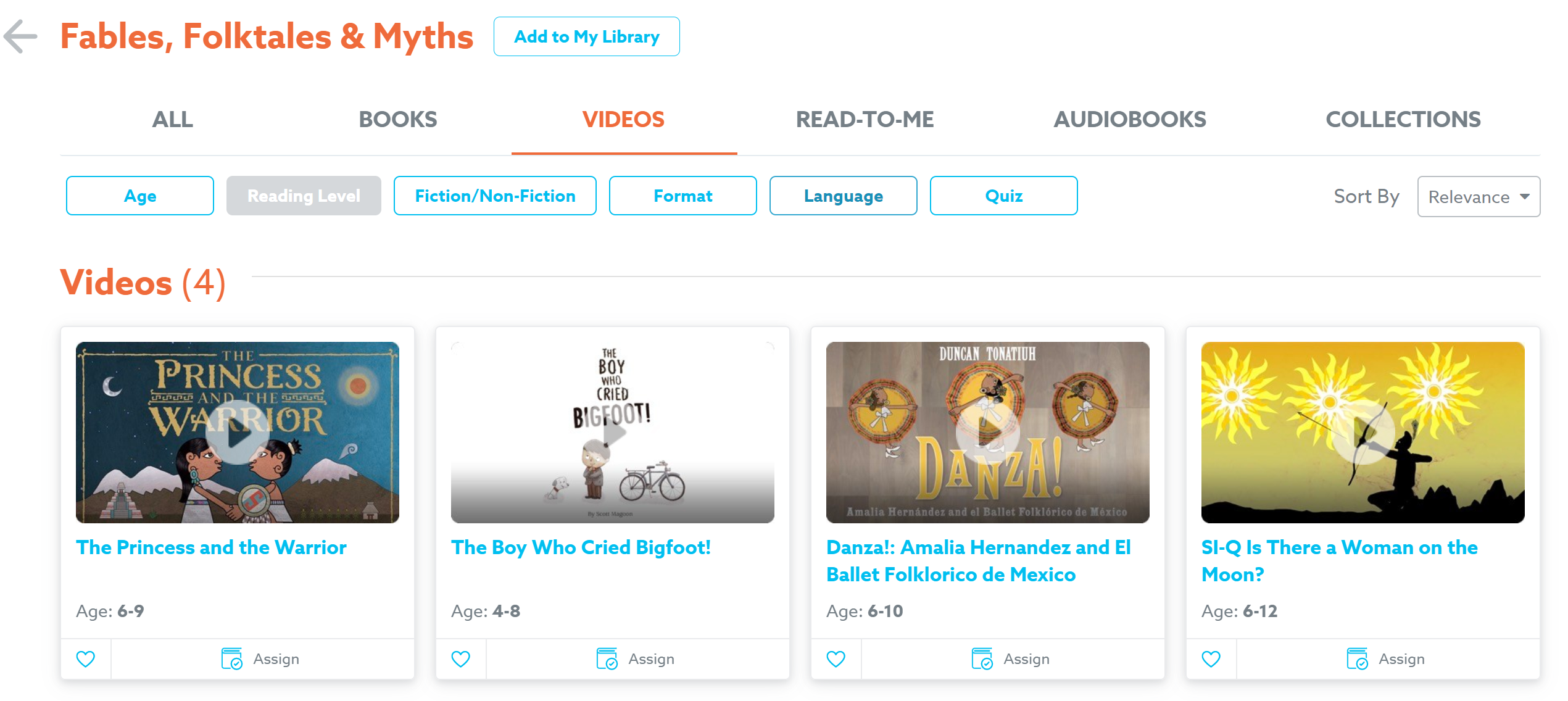
Story Source #6: Vook
Teachers get a year free of access to Vook. This offer is also open to home school educators. From their website:
“Vooks brings children’s books to life with animated illustrations, read-a-long text and narrated story. The ad-free platform features a variety of titles that have been engaging students all across the world. Whether being used as part of the lesson or to wind class down, Vooks is a fun and versatile tool for the classroom.
Learn more about Vook content:
Find More Stories Online
Looking for more stories? Be sure to check out authors online. Like David Walliams, many such as Kate Messner will read their books online.
Image Source
Feature image. screenshot by author.



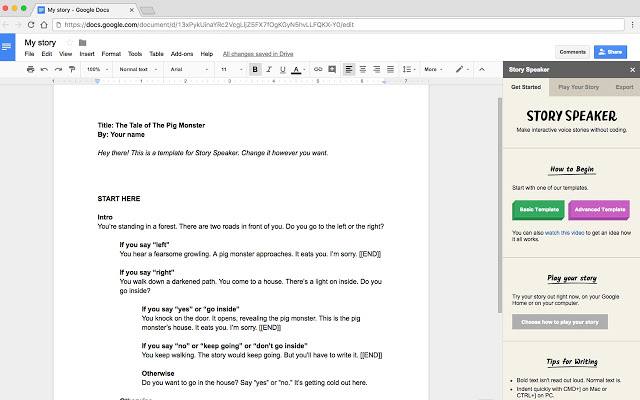 The teacher or Google administrator gives the students access to the Story Speaker add-on. Students go into Google Docs and select the Add-ons menu and choose Story Speaker — Open Story Speaker. They then write a story in Google Docs either on their own or using one of the two provided templates: Basic or Advanced (more about the templates below). The final step is to click Play Your Story and the story will be read by the Google Home. You can even export the story and save it to a class website or email to parents to listen to on their own Google Home or on Google Assistant on a smartphone. You can watch a short two-minute video to get the idea
The teacher or Google administrator gives the students access to the Story Speaker add-on. Students go into Google Docs and select the Add-ons menu and choose Story Speaker — Open Story Speaker. They then write a story in Google Docs either on their own or using one of the two provided templates: Basic or Advanced (more about the templates below). The final step is to click Play Your Story and the story will be read by the Google Home. You can even export the story and save it to a class website or email to parents to listen to on their own Google Home or on Google Assistant on a smartphone. You can watch a short two-minute video to get the idea 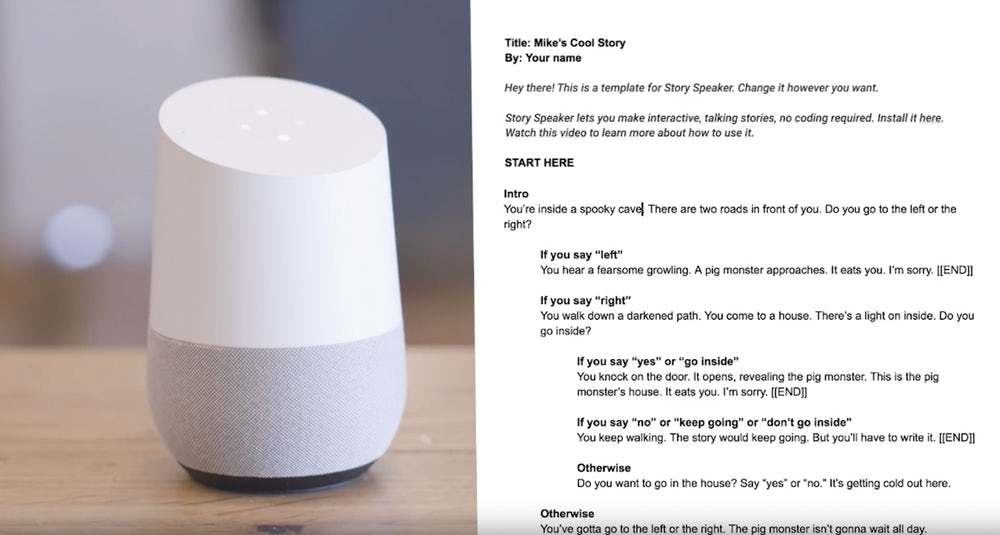 listener must say in order for the story to move forward. Students can begin to learn about basic if/then statements in code and how to predict outcomes. They must think like the listener as they predict what words he/she might say in response to the story. And they must follow logical, branching concepts, all without realizing that they are doing it. In addition, students can put notes to themselves in bold in the writing, much like programmers do, as bold text is not read out loud.
listener must say in order for the story to move forward. Students can begin to learn about basic if/then statements in code and how to predict outcomes. They must think like the listener as they predict what words he/she might say in response to the story. And they must follow logical, branching concepts, all without realizing that they are doing it. In addition, students can put notes to themselves in bold in the writing, much like programmers do, as bold text is not read out loud.
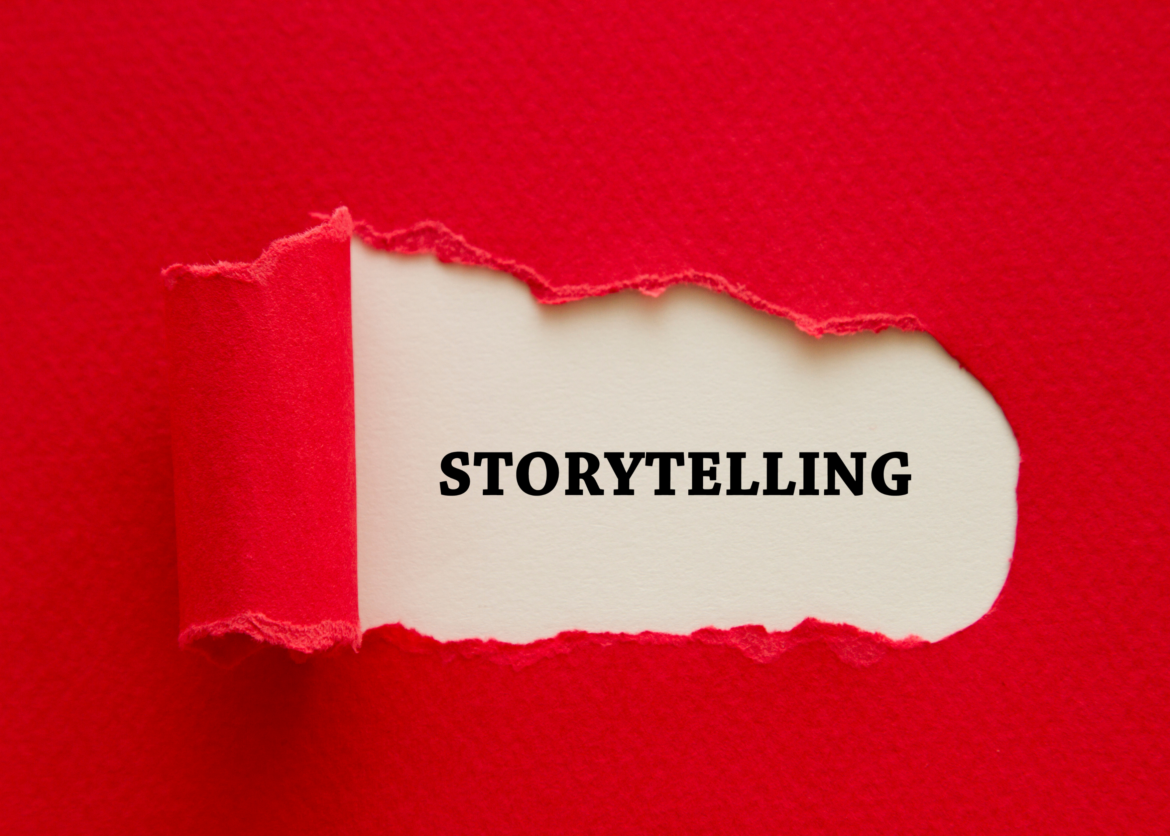
 There are various approaches to storytelling. The oral storytelling approach focuses on a beginning event, a middle with multiple events, each summarized by an image that captures our attention, until it reaches a turning point, moves to falling action, and ends. This story structure can be used for a lot more than just oral storytelling, of course. To prepare for this type of approach, Joe Lambert suggests creating a “memory box.”
There are various approaches to storytelling. The oral storytelling approach focuses on a beginning event, a middle with multiple events, each summarized by an image that captures our attention, until it reaches a turning point, moves to falling action, and ends. This story structure can be used for a lot more than just oral storytelling, of course. To prepare for this type of approach, Joe Lambert suggests creating a “memory box.”